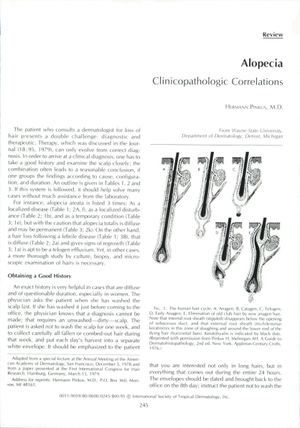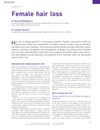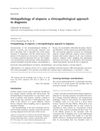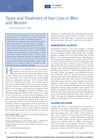Alopecia
June 1980
in “
International Journal of Dermatology
”

TLDR The document concludes that correct diagnosis of alopecia types is crucial, scalp biopsies are important, and more research is needed.
The 1980 document provides a comprehensive overview of the challenges in diagnosing and treating various forms of alopecia. It emphasizes the importance of a correct diagnosis, which involves a systematic approach that includes patient history, scalp examination, and sometimes laboratory tests. The document describes different types of alopecia, such as alopecia areata, which can become permanent as alopecia totalis, and conditions like pseudopelade of Brocq, discoid lupus erythematosus, lichen planopilaris, and alopecia mucinosa, each with distinct histological features and potential for hair regrowth. Male and female pattern alopecia are linked to hormonal influences, and the role of inflammation in alopecia areata is noted. The document also discusses the historical misassociation between skin eruptions caused by lice and typhoid fever. It concludes with the importance of scalp biopsies, the need for further research, and the use of staining for elastic fibers in diagnosing alopecia.




